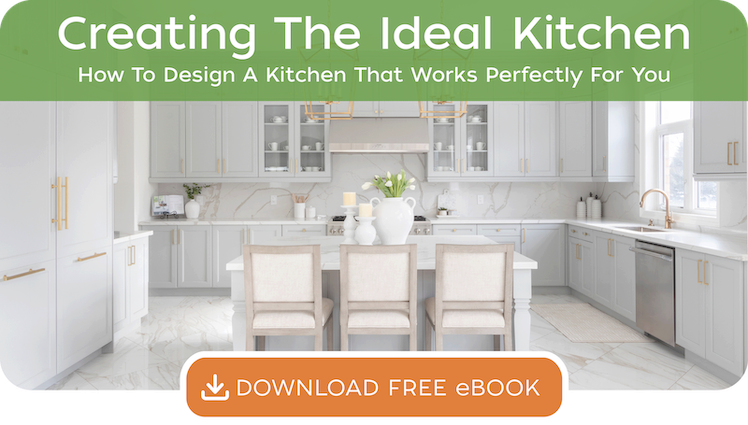Everything You Need To Know About Cabinet Types, Styles, Finishes, And More
Designing and building a new kitchen is one of the most rewarding and significant investments you can make in your home. With so many elements to consider—cabinets, tile, appliances, fixtures, lighting, and flooring—it can be challenging to know where to begin. A natural starting point is the cabinetry, which defines both the function and the aesthetic of the space. The type, style, and finish of your cabinets establish the overall tone of your kitchen and influence nearly every design decision that follows. Use our guide to explore the wide range of cabinetry options available and to design a kitchen that feels timeless, personal, and perfectly suited to your lifestyle.
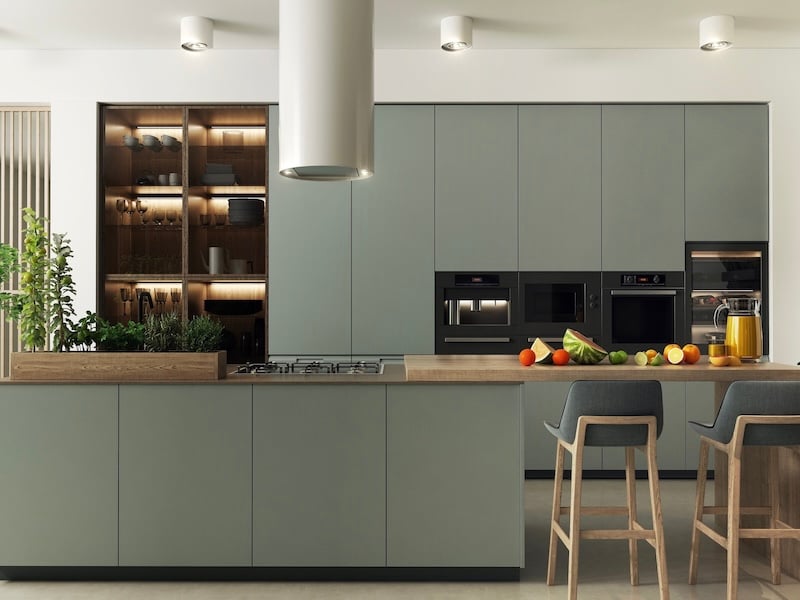
Types Of Kitchen Cabinets
1. Custom
Custom cabinetry is designed and built specifically for your kitchen. A designer will measure and evaluate the space to create a layout that maximizes storage, enhances flow, and reflects your personal taste. Every detail—from cabinet depth and configuration to door profiles and finishes—can be tailored to your needs. Because each piece is crafted to order, custom cabinetry represents the highest level of quality and artistry. While it requires a larger investment of time and budget, the result is a kitchen that feels cohesive, elegant, and uniquely yours.
Designing And Building A Custom Home
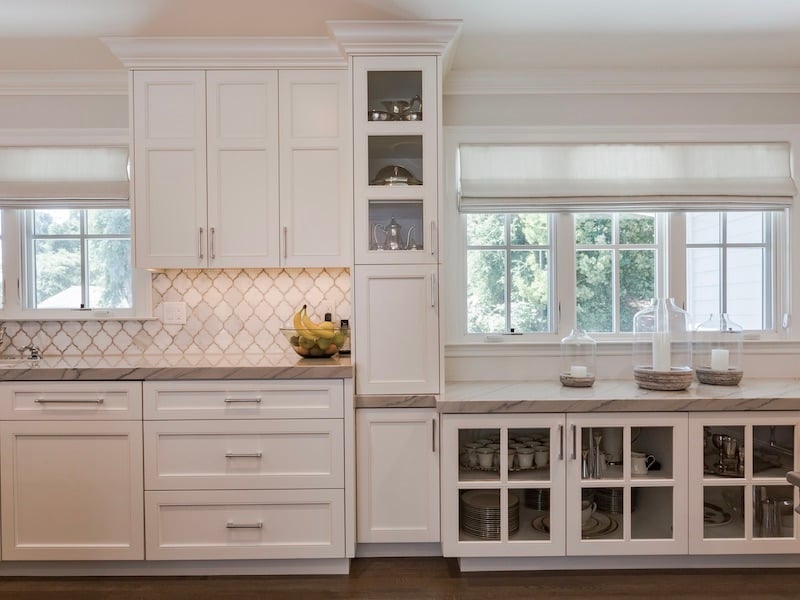
2. Semi-Custom
Semi-custom cabinetry is manufactured in standard sizes but allows for a degree of personalization. You can choose from an array of door styles, finishes, and decorative details, and in many cases adjust the cabinet dimensions for a more customized fit. This option delivers the look and feel of a bespoke design while offering notable savings over full custom work—a balance between flexibility, craftsmanship, and value.
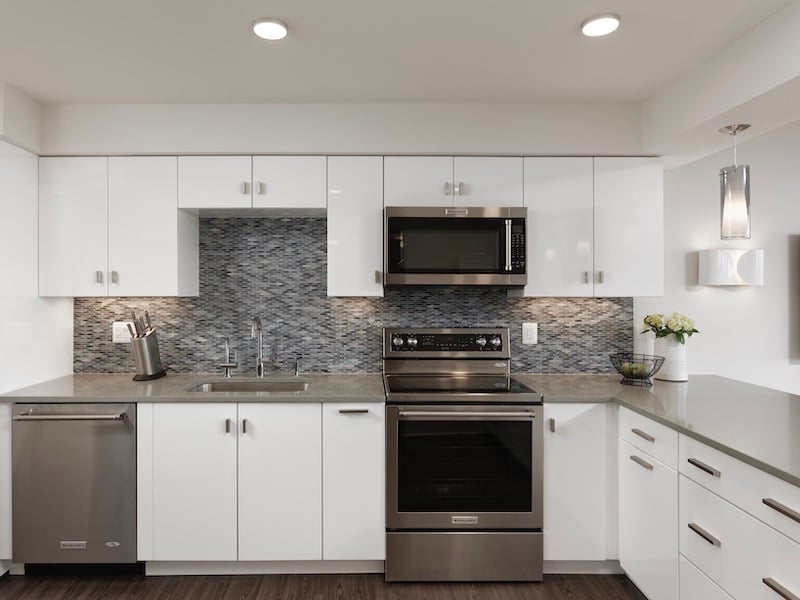
3. In-Stock
In-stock cabinets are pre-built and available in limited styles and finishes. They are ideal for homeowners seeking efficiency, affordability, or a faster installation timeline. While customization is minimal, in-stock cabinetry can still be elevated through thoughtful design, quality hardware, and a cohesive finish palette. For those prioritizing budget without sacrificing style, this option provides a practical and attractive foundation for a new kitchen.
Tips For Designing A Highly Functional Kitchen
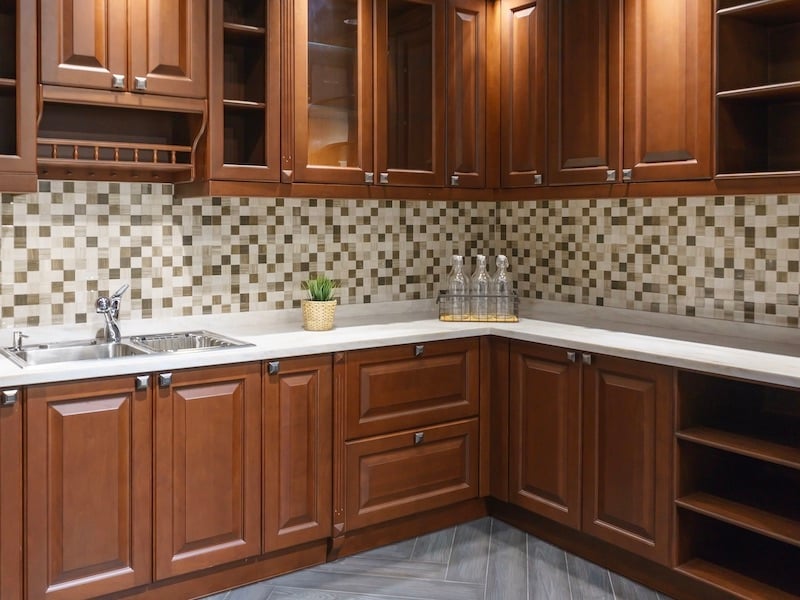
Types Of Kitchen Cabinet Doors And Drawers
1. Inset
Inset cabinetry features doors and drawers that fit perfectly within the cabinet frame, creating a smooth, furniture-quality appearance. The precise alignment showcases exceptional craftsmanship and gives the design a sense of structure and balance. Homeowners can select concealed or exposed hinges, with or without decorative beading, to complement either a streamlined transitional look or a more classic style. Because inset cabinets demand meticulous workmanship and exact measurements, they are typically custom built and often come at a higher cost—but their refined detailing and lasting beauty make them an elegant and enduring choice.
The Art of Choosing The Perfect Kitchen Cabinet Hardware
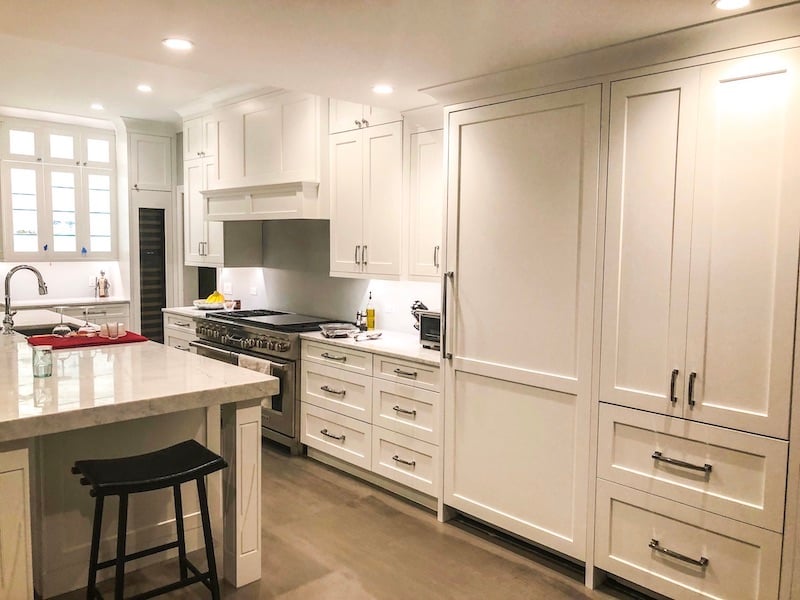
2. Full-Overlay
Full-overlay cabinetry features doors and drawers that completely cover the cabinet frame, creating a smooth, uninterrupted surface with minimal gaps between each component. This design delivers a sleek, streamlined appearance that enhances a sense of openness and order in the kitchen. Because the cabinet face is entirely concealed, full-overlay construction provides maximum interior storage space and a refined, custom look without the higher cost of inset cabinetry. It’s an excellent choice for transitional and contemporary designs alike, complementing everything from simple Shaker doors to flat-panel styles with integrated hardware.
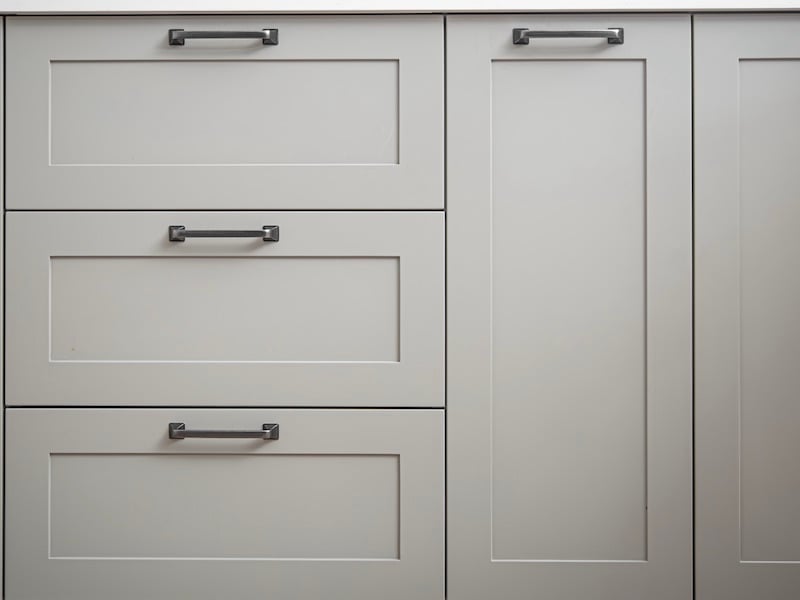
3. Partial Overlay
Partial-overlay cabinetry features doors and drawers that sit on top of the cabinet frame but do not completely cover it, leaving a visible border between each component. This design introduces subtle dimension and a look of fine detailing, emphasizing the framework of the cabinetry itself. It’s a classic and versatile option that complements a range of styles—from traditional to casual, or even transitional spaces that blend both. Because partial-overlay construction uses less material than inset or full-overlay designs, it’s often the most cost-effective choice, making it appealing for homeowners who want enduring style and quality workmanship at a more accessible price point.
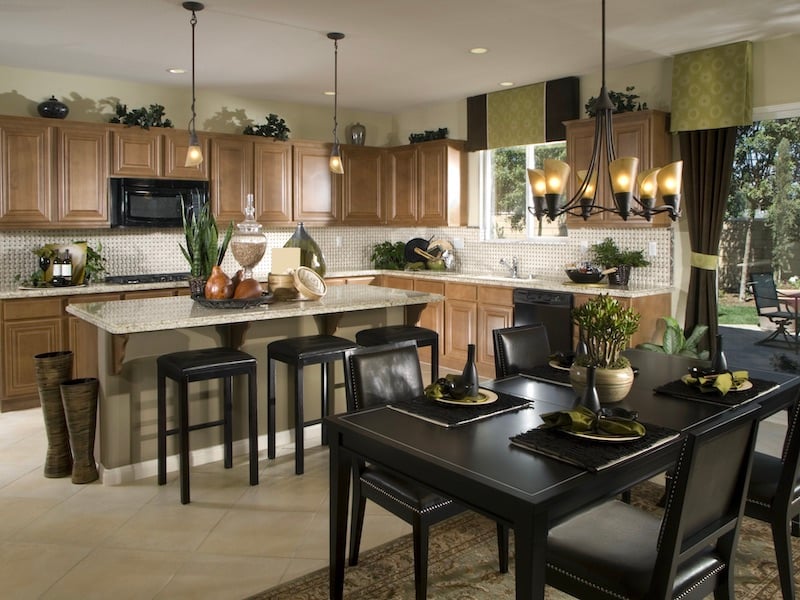
Styles Of Kitchen Cabinets
1. Shaker
Shaker cabinetry is admired for its clean lines, balanced proportions, and enduring versatility. The recessed center panel framed by simple, squared edges creates a look that feels both timeless and adaptable. Whether painted in a soft neutral for a contemporary feel or stained to highlight the natural grain of the wood, Shaker cabinets complement a wide range of kitchen styles with understated elegance.
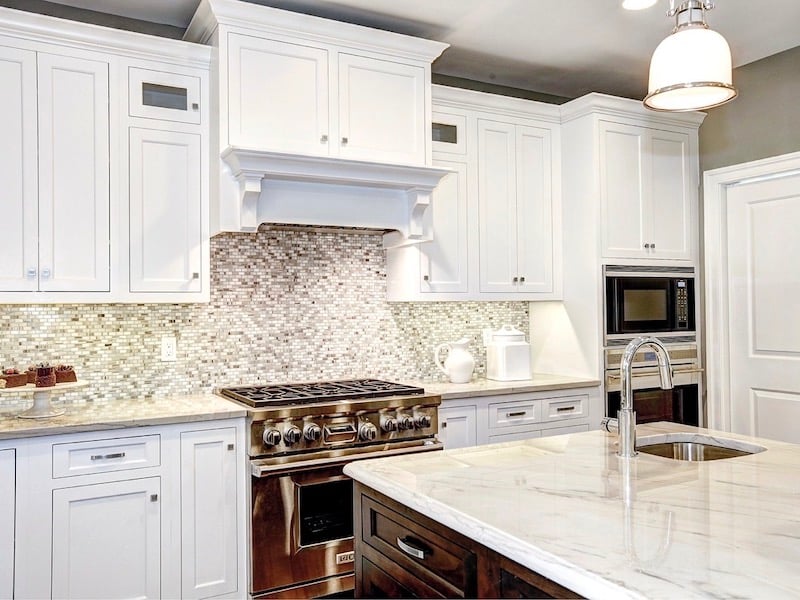
2. Slab or Flat Panel
Slab, or flat-panel, cabinetry features smooth, unadorned surfaces that convey simplicity and sophistication. This minimalist style emphasizes material quality and precision, allowing finishes such as matte lacquer, high gloss, or natural veneer to stand out. Slab doors are ideal for modern, Scandinavian, or mid-century-inspired kitchens where clean lines and uncluttered form define the design.
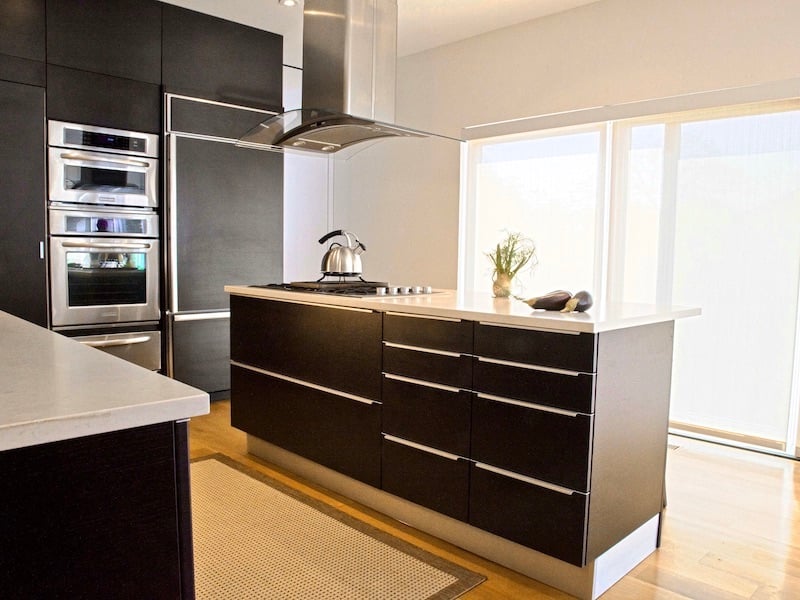
3. Raised Panel
Raised-panel cabinetry features a contoured frame that surrounds a higher center panel, which adds depth and architectural interest to a kitchen. This classic style introduces warmth and visual dimension, making it a natural choice for traditional or transitional designs. When finished with a hand-applied stain or subtle glaze, raised-panel doors showcase artistry and craftsmanship in a way that feels both welcoming and refined.
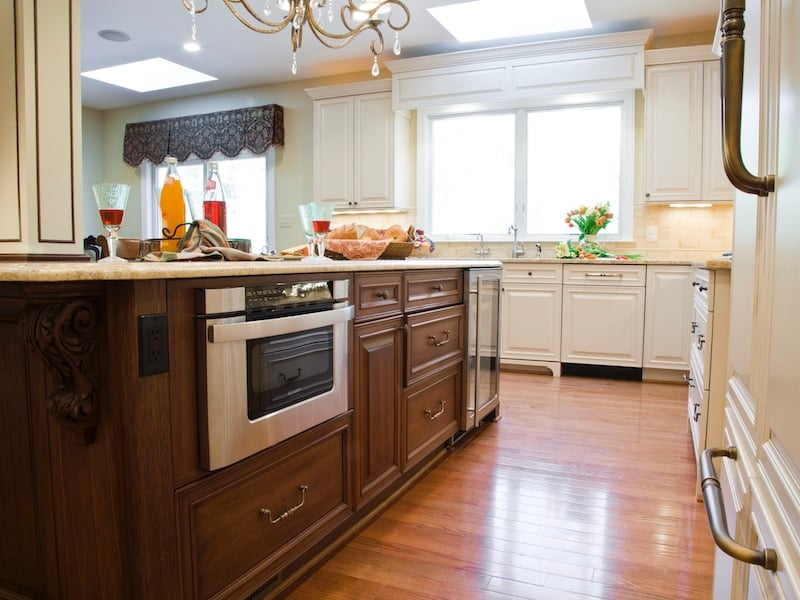
4. Glass
Glass-front cabinets create an open, elegant aesthetic that softens the look of solid cabinetry. They offer a sophisticated way to display decorative dishware, glassware, or collected pieces while adding depth and visual interest to the kitchen. Choose from clear, frosted, or textured glass—with or without mullions—to achieve your desired level of transparency and detail. Whether used as accents or throughout an entire wall, glass-front cabinetry lends a custom, curated quality to any design.
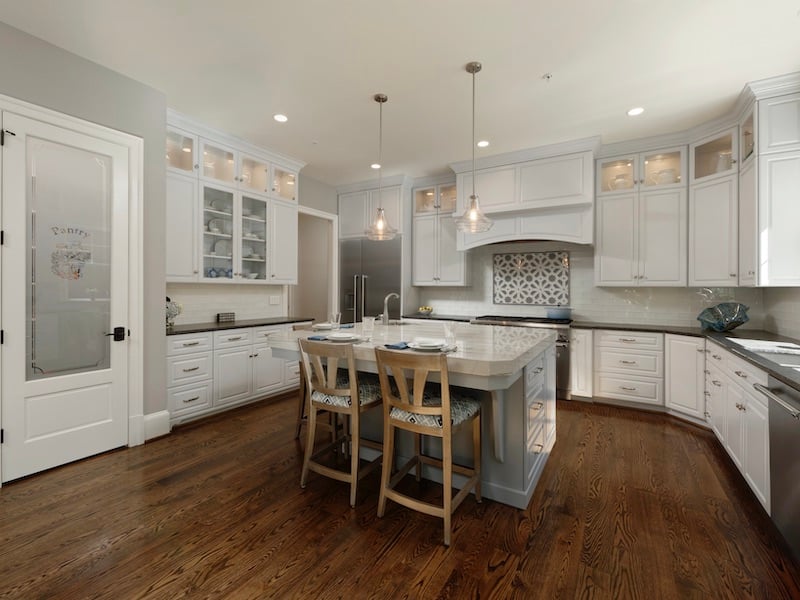
5. Beadboard
Beadboard cabinetry features narrow vertical panels separated by delicate grooves, offering a touch of texture and charm. This approachable style evokes a relaxed, handcrafted feel that suits farmhouse, cottage, or coastal interiors. Whether painted in a soft hue or left natural, beadboard doors bring warmth and character while maintaining a sense of casual refinement.
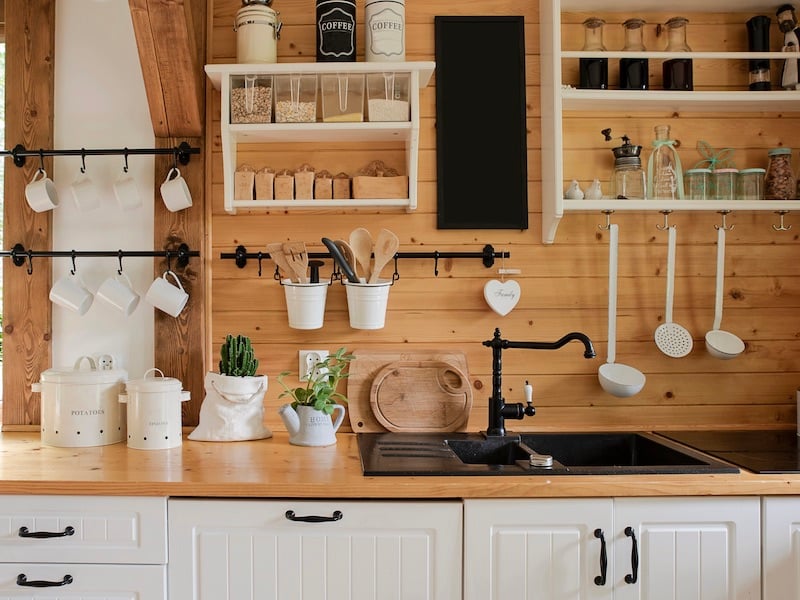
Finishes For Kitchen Cabinets
1. Natural
A natural finish highlights the beauty of the wood itself. A clear protective coating enhances the grain and subtle color variations, giving the cabinetry an organic, authentic appearance. This finish celebrates the natural character of the material, including its unique textures and patterns, for a warm and understated look.
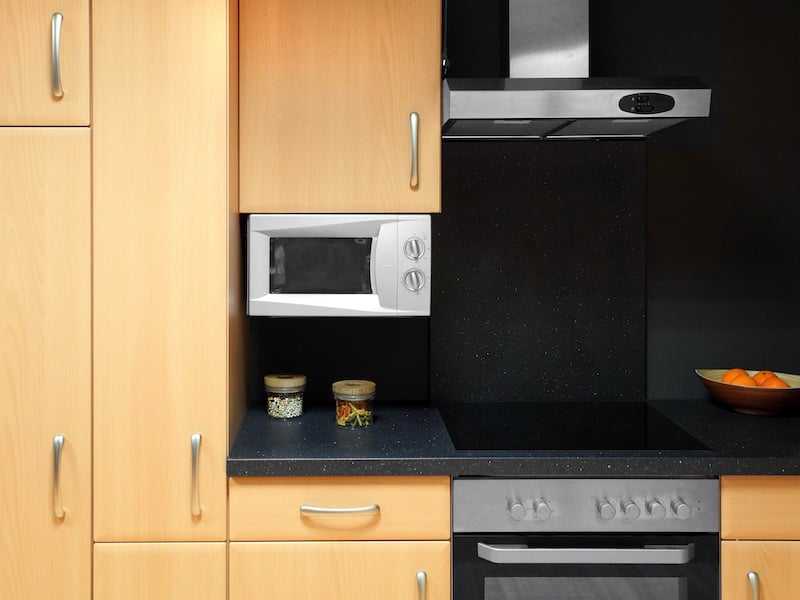
2. Painted
Painted cabinetry offers endless color possibilities, from soft neutrals to bold accent hues. Many homeowners choose contrasting tones—such as lighter wall cabinets paired with a darker island—to create visual interest. Painted finishes deliver a crisp, tailored appearance, though they may require occasional touch-ups to maintain their fresh look over time.
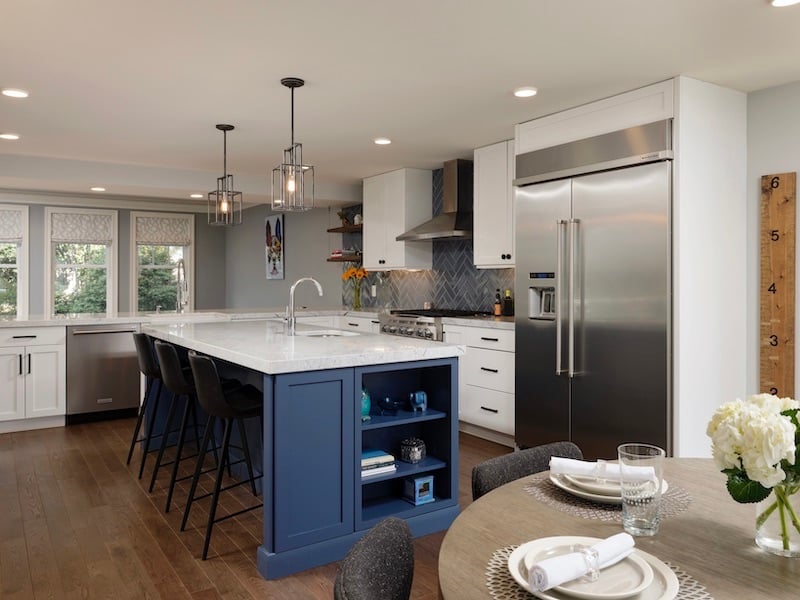
3. Stained
A stained finish changes the color of the wood while allowing the grain to remain visible. Available in a wide range of tones from light oak to deep espresso, stain enhances texture and adds depth. It’s a versatile option that works well in both classic and contemporary settings and provides lasting protection along with rich visual appeal.
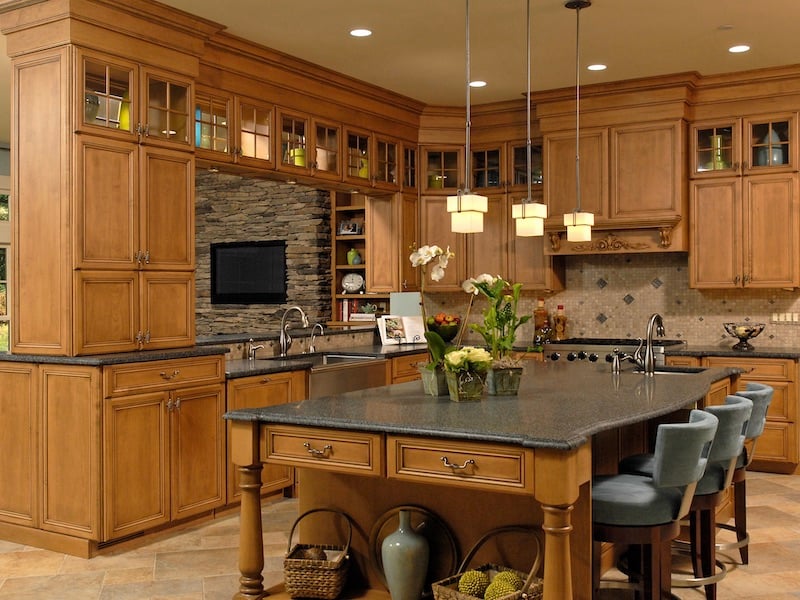
4. Glazed
A glazed finish adds a subtle layer of color or contrast that defines edges and profiles. The result is a slightly aged, hand-finished appearance that brings dimension and character to the cabinetry. Glazing complements traditional and farmhouse-inspired designs especially well, though it can be customized for a more refined or understated effect.
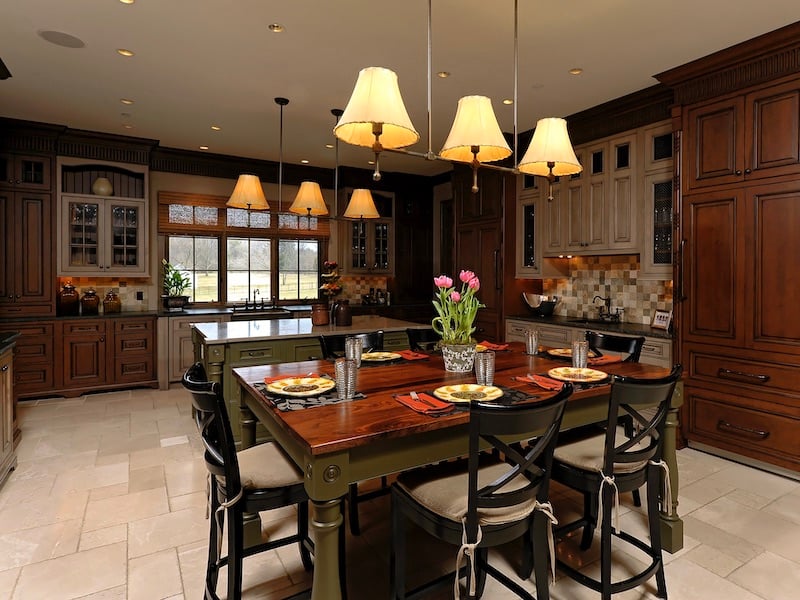
5. Lacquered
Lacquer creates a smooth, durable surface with a soft sheen that resists moisture and stains. Its polished appearance gives cabinetry a refined, modern edge. Because the process requires controlled application, lacquered finishes are typically completed off-site, resulting in a flawless, long-lasting result that justifies the higher cost.
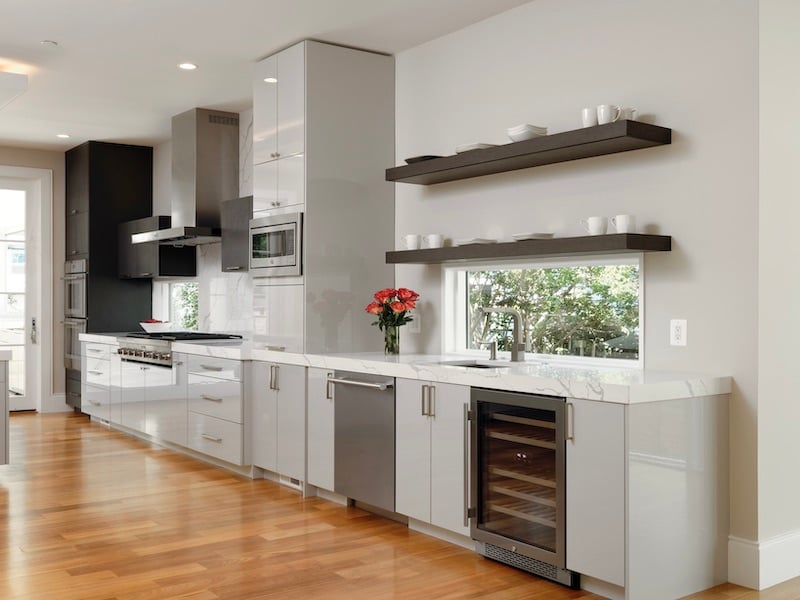
6. Laminate
Laminate cabinetry combines durability with design flexibility. A thin, resilient layer is bonded to a wood-composite base, resulting in a surface that’s easy to clean and highly resistant to wear. Offered in an extensive range of colors and textures, laminate can replicate the look of painted or natural wood at a more accessible price. While it lacks the tactile richness of solid wood, it delivers a sleek, contemporary style that performs well in everyday use.
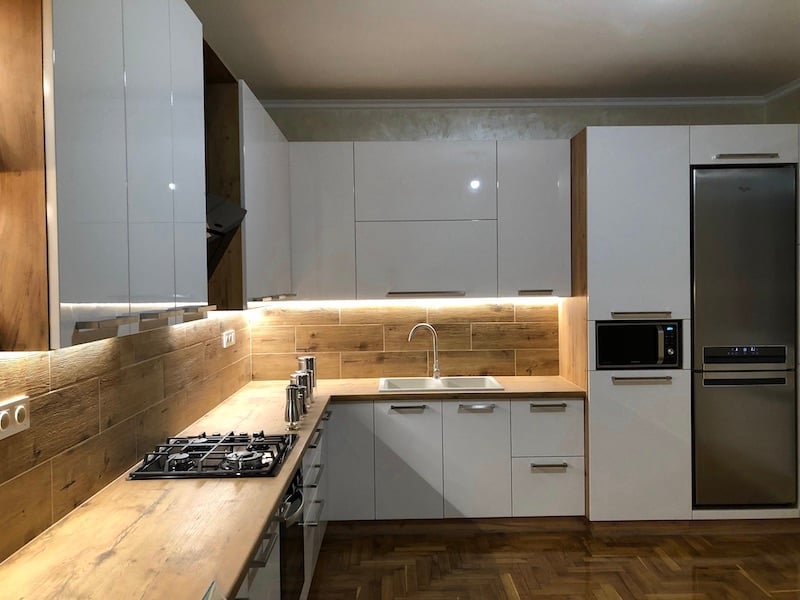
Accessories For Kitchen Cabinets
A beautifully designed kitchen is not just about how it looks—it’s about how it works. The right cabinet accessories can transform everyday routines by keeping essentials organized and within easy reach. Deep drawers are ideal for storing bulky cookware, while pull-out trays and Lazy Susans make it simple to access items tucked away in corners. Built-in dividers help arrange utensils, flatware, and spices neatly, and vertical slots provide a convenient place for baking sheets, trays, and cutting boards.
Before finalizing your cabinetry design, take inventory of what you use most often and consider how you prefer to store it. Then, work with your homebuilder or kitchen designer to select interior fittings that suit your cooking habits and household needs. For more ideas on optimizing storage and function, read our article “12 Ways to Design an Organized and Decluttered Kitchen.”
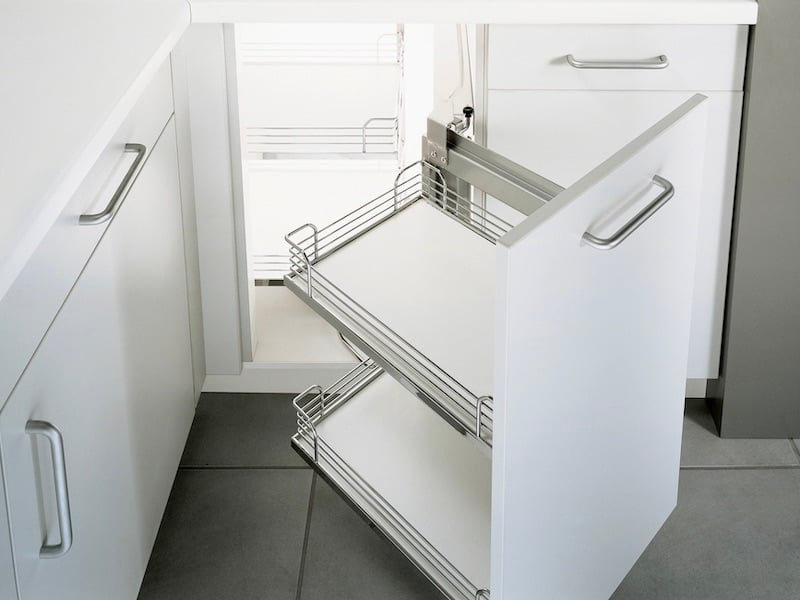
At Meridian Homes, we specialize in luxury remodeling and custom home building in the Washington, DC area. Our mission is to create exceptional residences that exceed expectations. Our highly personalized design process and careful management of every project have earned us a reputation over many years for outstanding client service and solid, beautiful craftsmanship. Contact us today to begin your custom home or remodeling project.

